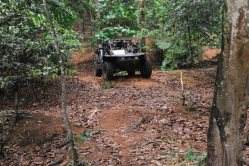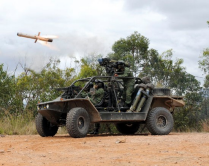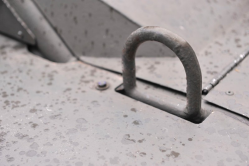TECHNOLOGY
LIGHT AND LETHAL
20 Apr 2012

Quick on its feet in the roughest of terrain and armed to the teeth with weaponry, even tanks would do well to stay out of a Light Strike Vehicle's (LSV's) cross hairs.
Its skeletal silhouette makes the LSV unmistakable for anything else, as is the characteristic manner which the vehicle darts across impossibly difficult terrain. While its appearance looks unfinished, as though someone forgot to put on a roof, it is in cross-country terrain that the vehicle shines.
Despite the steep incline ahead, a robust growl from the engine sends the LSV up all the way. Uneven terrain is met with similar aplomb. Sharp turns, the kind you would never think to do on gravel tracks, are executed with ease.
Firepower
The LSV can be outfitted in a variety of configurations to suit the mission. From a 40mm Automatic Grenade Launcher (AGL) to heavy-hitting advanced Anti-Tank Guided Missiles (ATGM), the LSV handles these weapons systems with ease.
Specifically, the LSV can be equipped with the SPIKE ATGM, a 13kg missile with a 4km range. At that distance, the SPIKE ATGM out-classes most anti-personnel weapons found on armoured vehicles, effectively enhancing the survivability of the LSV's crew.
Swapping one system for another is a simple matter of changing the weapon-to-mast interface unit. The mast located in the centre of the vehicle which holds up the different weapon configurations, can be lowered during driving for additional safety and stability.
Night vision is taken care of by affixing infra-red adaptors which enable the gunner to see and fire at targets.
The LSVs, manufactured in Australia based on an American design, were procured by the Singapore Armed Forces (SAF) to replace the jeeps carrying the 106mm recoilless guns. They were initiated into the SAF in 1998. Operated by the SAF's Guards and Infantry battalions, the LSV enhances mobility and increases the punch of its troops.
Sling Lugs
Designed to bear an LSV's weight when it is being transported by helicopter, four of these lugs are located near each corner of the vehicle. While in the air, these lugs are attached to the helicopter by a U-shaped metal connector called a clevis.
Tubular Roll Cage
Lightweight but tough, the roll cage protects crew members in the event of an accident or overturn. Four-point harnesses which securely strap each crew member in his seat keep the crew within the confines of the roll cage and out of harm's way.
Suspension System
Off-road suspension system and tyres keep the LSV planted to whatever terrain it happens to be traversing. Coupled with a 2.2L turbocharged diesel engine and 3-speed semi-automatic transmission, the LSV can hit a maximum speed of 110kmh on paved roads.
40mm Automatic Grenade Launcher
Capable of lobbing high-explosive \dual-purpose grenades at targets up to 1.5km away, the 40mm AGL provides fire support by blanketing a large area with grenades, rendering it impassable. The LSV's specialised mount for the grenade launcher provides more stability when firing and a simple but effective safety feature (in the shape of a long tube) prevents accidental firing on the driver or the vehicle. Other weapon systems can also be mounted.
General Purpose Machine Gun
Primarily used for self-defence, this 11.4kg machine gun can spew over 400 rounds per minute, over an effective distance of 800m when the crew needs to quickly defend against or pin down opposing troops.
| TECH SPECS | ||
|---|---|---|
| Crew | 3 (Commander, Gunner and Driver) | |
| Max climb | More than 30 degrees | |
| Side slope | 45 degrees | |
| Fording | 0.6m | |
| Weight | 1.5 ton | |
| Max speed | 110kmh (on-road) 25 - 110kmh (off-road) | |
| Dimensions | Length | 4.25m |
| Width | 2.11m | |
| Height | 1.90m | |
ALSO READ IN TECHNOLOGY

AI joins the fight in national cyber defence exercise
12 Nov 2025
AI and closer collaboration among agencies and industry are taking centre stage in this year’s Critical Infrastructure Defence Exercise (CIDeX).
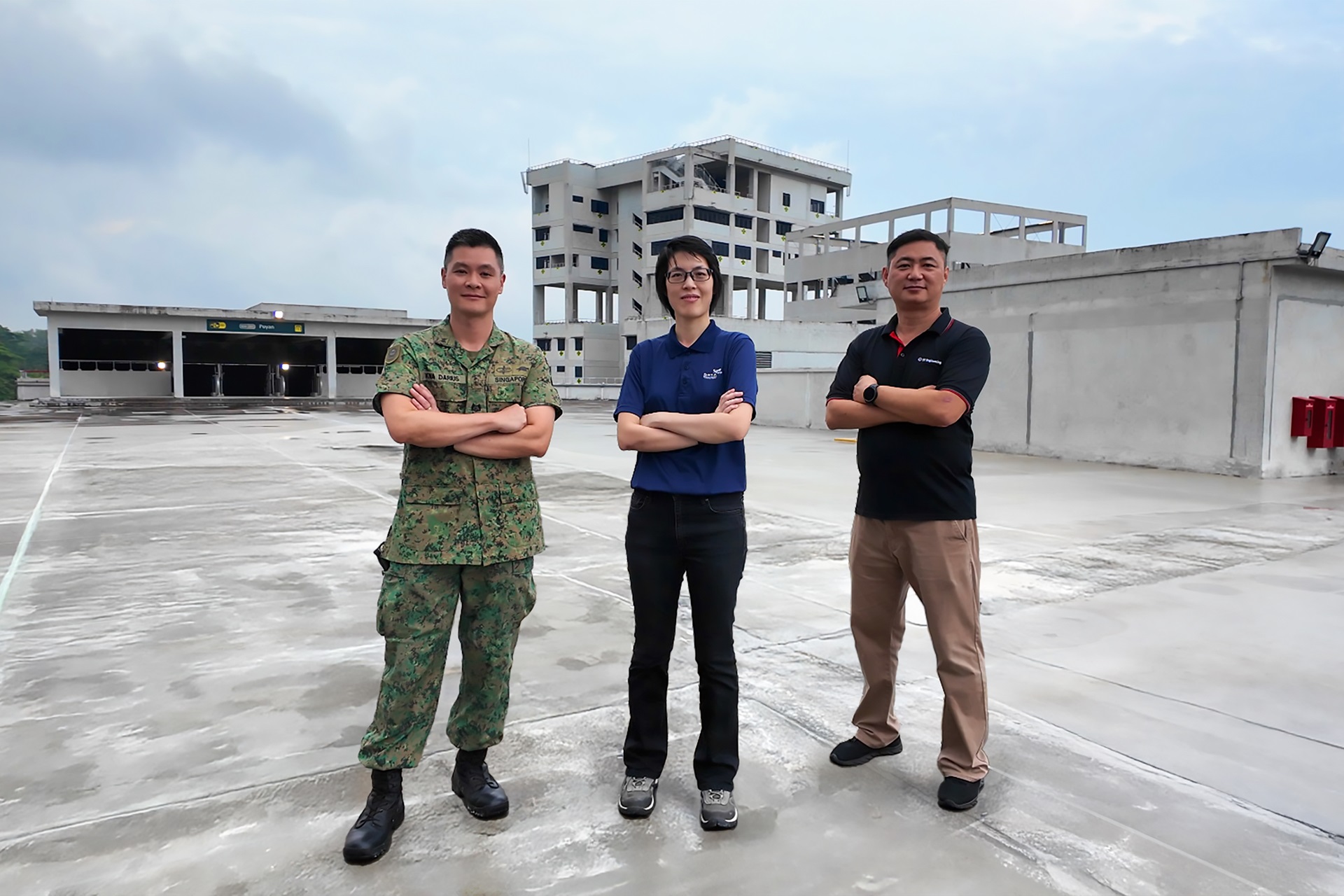
They built this city
01 Oct 2025
Turning vision to reality: the team behind SAFTI City clinches the Defence Technology Prize 2025 Team (Engineering) Award!
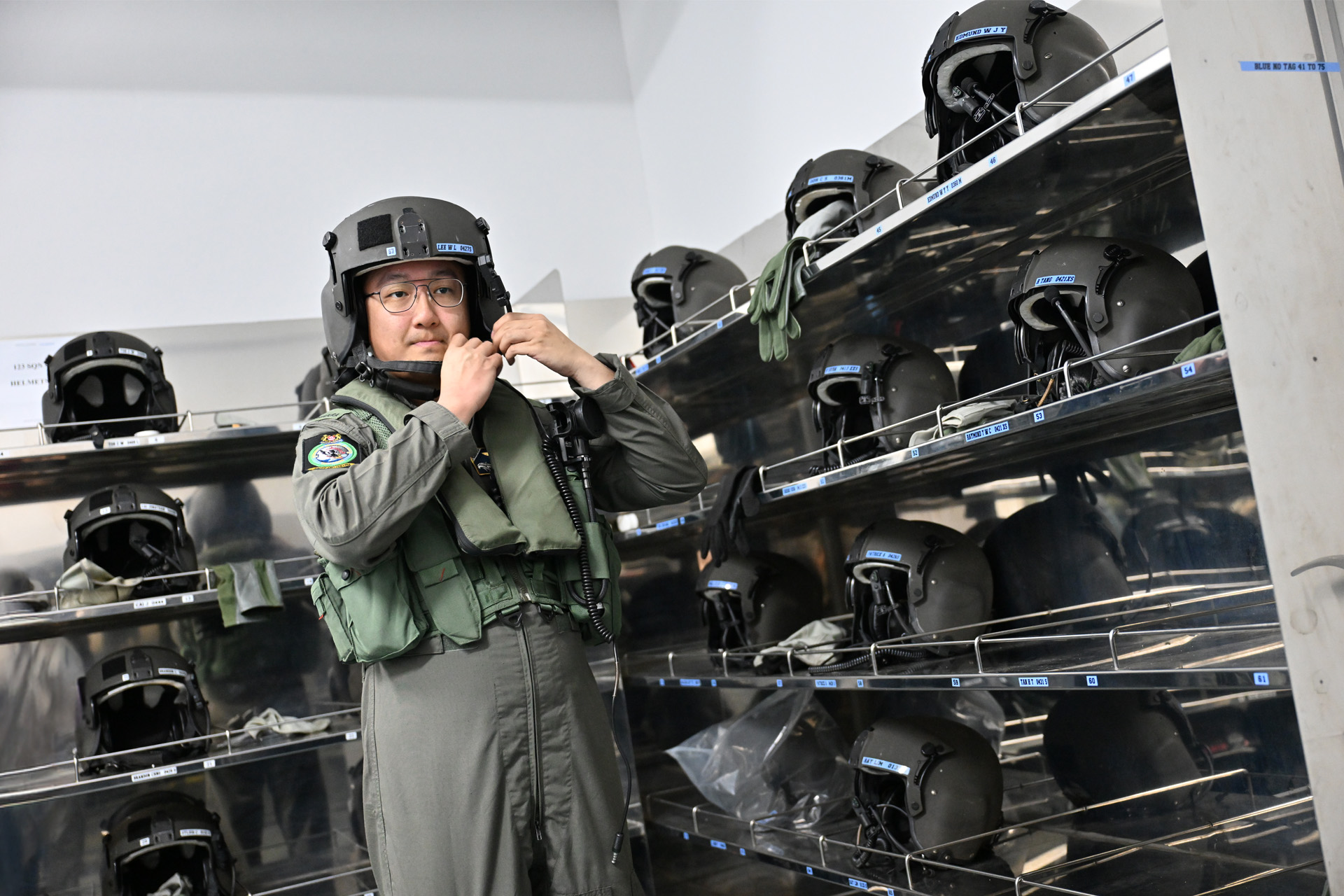
Operating over skies & seas
22 Aug 2025
This gear is designed to help a Sensor Supervisor survive emergencies in the air and at sea.

